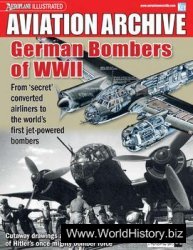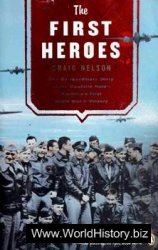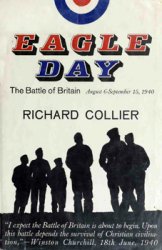Organized at Accra in 1980 to offer charter and contract cargo services throughout Africa and from Banjul, Gambia, on to London. The carrier’s flight equipment comprises a single Boeing 707-3B4C, leased from Middle East Airlines, S. A.L. (2) . Unable to maintain economic viability in a period of general recession, the company stops flying in 1988.
WEST AFRICAN AIRWAYS CORPORATION: Nigeria, Sierra Leone, Gold Coast, Ghana, Gambia (1946-1958). As the result of the West African Territories Order-in-Council signed by King George VI on May 15, 1946, WAAC is established as successor to Elders Colonial Airways, Ltd. and the airline operating division of the West African Air Transport Authority, owned by the four colonial governments of British West Africa.
Sir Hubert Walker, formerly director of public works and controller of Nigerian civil aviation, is appointed chairman. J. R. McCrindle, seconded from British Overseas Airways Corporation (BOAC), is managing director, with another BOAC executive, B. C. H. Cross, as general manager. Orders are placed for 11 de Havilland DH 104 Dove 1s; the request will be followed within months by an order for 3 Miles Marathon Is.
While preparations are made to begin services, including the establishment of regulations, airfields, and navigation aids, British Overseas Airways Corporation (BOAC) is contracted to provide twice-weekly Douglas DC-3 roundtrips for the temporary Nigerian Air Services, Ltd. from Lagos to Jos, Kano, and Port Harcourt.
The first DH 104 Dove 1 is delivered at Lagos on September 14 and initial service to Calabar starts in October.
Following the assemblage of a tiny Douglas DC-3 fleet leased from BOAC, WAAC in September and October 1947 begins assuming the Lagos to Kano route of Nigeria Air Services, Ltd. On December 31, the carrier takes over all Gold Coast routes as Nigeria Air Services, Ltd. shuts its doors.
Twice-weekly Lagos to Kano DC-3 flights, formerly operated by BOAC under the name Nigeria Air Services, Ltd., commence on January 24, 1948 and full Nigeria service is assumed on January 31.
Between March 5 and 25, services are extended to Benin City, Enugu, Tiko, Potiskum, Maiduguri, Yola, Ibadan, Ilorin, Kanduna, Accra, Tako-radi, Kumasi, Kumasi, and Tamale. When BOAC withdraws from its weekly service from Freetown to Dakar on March 27 and from Lagos to Dakar on March 29, these are taken over on March 31.
The last of the Dove 1s enter service as BOAC reclaims its DC-3s.
The first traffic figures are released; boardings for the year total 12,000.
A Dove 1 with eight passengers crashes in the Niger River Delta during May 1949, killing all aboard. As a result, the 10 remaining DH 104s are withdrawn from service, leaving the DC-3s to shoulder the traffic loads. Two Bristol 170 Wayfarers chartered from the military are delivered to Accra and begin low-fare intercolonial services in November.
Enplanements during the 12 months reach 13,813.
Bristol 170 Lagos to Khartoum operations are initiated in April 1950. Two more Bristol Wayfarers are acquired and start flying to Benin City, Kano, Port Harcourt, and Tiko.
The year’s customer bookings are 14,149.
Operations continue apace in 1951 as a fifth Bristol Wayfarer enters service and the Doves are brought back. A Bristol 170 Mk. 21 is lost near Kaduna, Nigeria, on July 27; there are no fatalities.
Customer bookings nearly double, reaching 32,089.
During the summer of 1952, a contract is signed with British European Airways Corporation (BEA) for the lease of six Miles Marathon
I transports; these join the fleet between July and October and begin flying throughout Nigeria and the Gold Coast.
One of the Dove 1s is badly damaged in a wheels-up emergency landing at Lagos on November 18. On December 19, weekly frequencies are initiated to Mamfe.
Bookings for the year soar to 42,769.
One of the unsuccessful Marathons is withdrawn on February 9, 1953. On March 6 the Mamfe route is closed down. A Wayfarer is damaged on June 23 when it runs off the runway while landing at Ikeja and comes to a stop in a ditch; although no injuries are reported, the aircraft will have to be taken out of service and ferried to Lagos for repairs.
Due to poor traffic, Lagos to Khartoum Marathon I service is suspended on August 27. There are two nonfatal crashes involving failed landing gear during October; on October 8, a Marathon I is damaged by the failure of its landing gear drag strut at Jos while a Dove 1 is harmed as the result of a bad landing at Kaduna.
Boardings for the year climb to 57,189.
On February 8, 1954, a Marathon I is damaged while landing at Jos when its landing gear drag strut fails — exactly the same reason as its sis-tership’s crash at Jos the previous October. The next day, all of the Marathon Is are withdrawn. Sir Hubert Walker steps down as chairman on March 31 and is succeeded as Chairman/Managing Director by M. C. P. Mostert who had, years earlier, played a prominent role with Mrs. Florence Wilson’s Wilson Airways, Ltd. in Kenya.
In September, one of the withdrawn Marathon Is is sold by BEA to the Royal Jordanian Air Force to become King Hussein’s personal transport. To replace the Bristols and Dove 1s, orders are now placed for three DH 114 Heron 2s.
Passenger enplanements accelerate to 69,261.
While on a February 5, 1955 domestic flight from Enugu, a Bristol 170 Mk. 21E with 4 crew and 9 passengers loses a wing and crashes 84 km. NW of Calobar, Nigeria; there are no survivors.
A DC-3 is quickly chartered to take the downed aircraft’s place, as the remaining Wayfarers are grounded. Between March and October, all of the remaining Marathon Is are returned to BEA and the Doves 1s are also withdrawn for modification. Four additional DC-3s and a Vickers Viking are chartered.
As a result of the radical decline in capacity, bookings for the year slip to 49,267.
On January 1, 1956, D. Malcolm Brown succeeds M. C. P Mostert as chairman/managing director. Lagos-Accra-Kumasi DH-114 Heron 2 flights begin on May 16. As the other two Heron 2s arrive, the aircraft leased the previous year are all returned, as are the two Bristol 170s chartered from the military in 1948.
Passenger traffic rebounds, up to 61,476 passengers flown.
The Gold Coast achieves its independence on March 6, 1957 and is renamed Ghana. The fleet at this point includes 2 Bristol 170s, 8 Herons, and 6 Doves, 3 of which are soon thereafter sold out of service. Seven DC-3s are acquired through the remaining three quarters. To pay for them, the two Wayfarers and a Dove 1 are sold.
During the fourth quarter, an agreement is signed with British Overseas Airways Corporation (BOAC). Under its terms, the British flag carrier is contracted to provide twice-weekly Canadair C-4 Argonaut roundtrips between Lagos and London.
Enplanements for the year are 73,444, the highest number ever.
Given the rush to independence in West Africa, the West African Air Transport Authority determines in a February 1958 meeting that significant changes are required in their consortium airline. Meeting later, the agency determines that Ghana and Nigeria will form their own state airlines and that WAAC will be disbanded.
The consortium air carrier ceases to exist in its original form as of September 30. It is replaced by a separate Ghana Airways, Ltd. and the remnants of the old airline, renamed WAAC (Nigeria), Ltd. trading as Nigeria Airways, Ltd. Sierra Leone Airways, Ltd., is also created and it will be followed by a Gambia Airways, Ltd. in 1964.




 World History
World History









